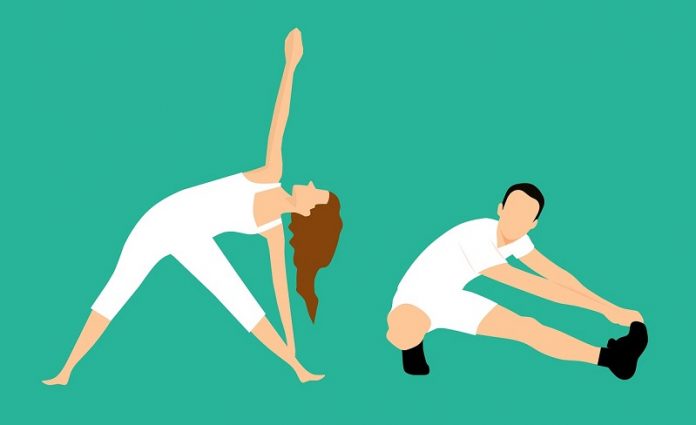
It is known that regular exercise is good for our body and safe for most everyone.
However, with any type of exercise, there is a chance you can get injured. The injuries can range from strains and sprains to back pain.
Researchers from the U.S. National Library of Medicine suggest that people can prevent injury and stay safe during exercise with a little planning.
Have time to warm up and cool down
Warming up before exercise gets your blood flowing, warms up your muscles, and helps you avoid injury.
The easiest way to warm up is to exercise slowly for the first few minutes, then pick up the pace. For example, before running you can walk briskly for 5 to 10 minutes.
You should also cool down after exercise to bring your heart rate and body temperature back to normal. For example, you can end your exercise at a slower pace for the last 5 to 10 minutes.
Stretch your body to be more flexible
To stay flexible, you should stretch your body at least 2 times a week. You can stretch either after you have warmed up or after you exercise.
But remember that you should hold stretches for no longer than 15 to 30 seconds.
Choose the right exercise
For people have not been active or with a health condition, it is important to talk to doctors to make sure it is safe to do exercise and what type of exercise is appropriate.
For people new to exercise, it is wise to start with low-intensity options such as walking, swimming, riding a stationary bike and golf.
These types of exercise are less likely to lead to injury than intense activities like running.
Choose safe equipment
Using safety equipment can strongly reduce your risk of injury.
Safety equipment for an exercise may include footwear, helmets, mouth guards, goggles, shin guards and protective guards, and kneepads.
It is important to choose the right type of equipment for your exercise and make sure the equipment fits you properly and works well.
Take some courses to learn
Sometimes taking lessons to learn the basics can help prevent injury, especially if you are new to an exercise or sport.
You can find lessons in your community or through sports or outdoors organizations or consider hiring a personal trainer.
Do more than one type of exercise
It can be helpful to have more than one workout options. For instance, you can do jogging 3 days a week, swimming 1 day a week, and brisk walking 2 days a week.
Pay attention to your body’s feelings
To build muscles, you will need to push your body. But the key is to push slowly and gradually.
It is okay to have sore muscles after a workout, but not if you feel pain during the exercise. If you feel pain, stop right away.
In addition, being tired all the time can be a sign that you may be overdoing it.
See your doctor when it is necessary
If your muscle or joint pain that does not go away after self-care, you need to see your doctor.
In addition, if you have chest pain during or after exercise, think you may have a broken bone, or have a serious injury or severe pain or bleeding, call for help immediately.
Copyright © 2019 Knowridge Science Report. All rights reserved.



